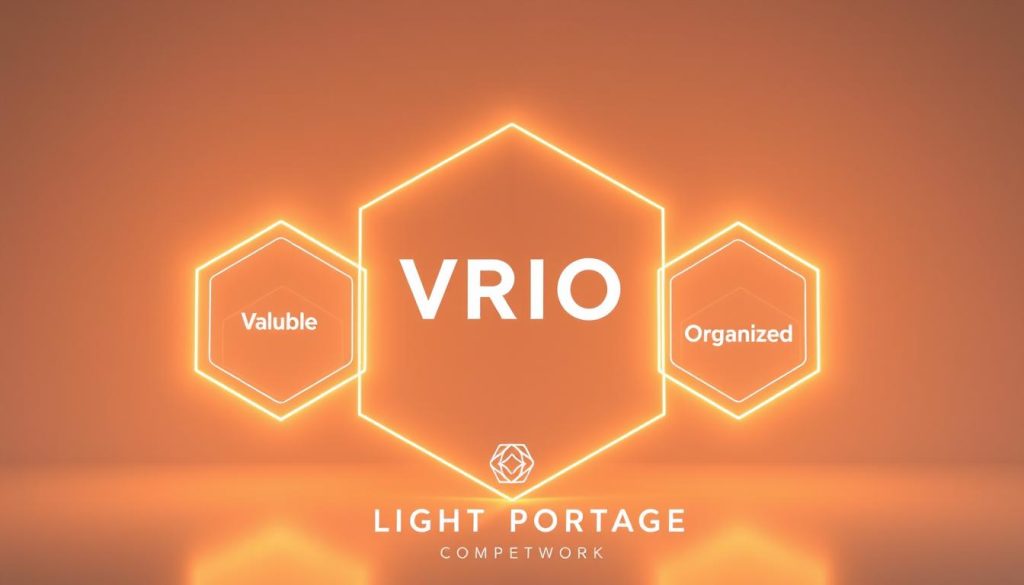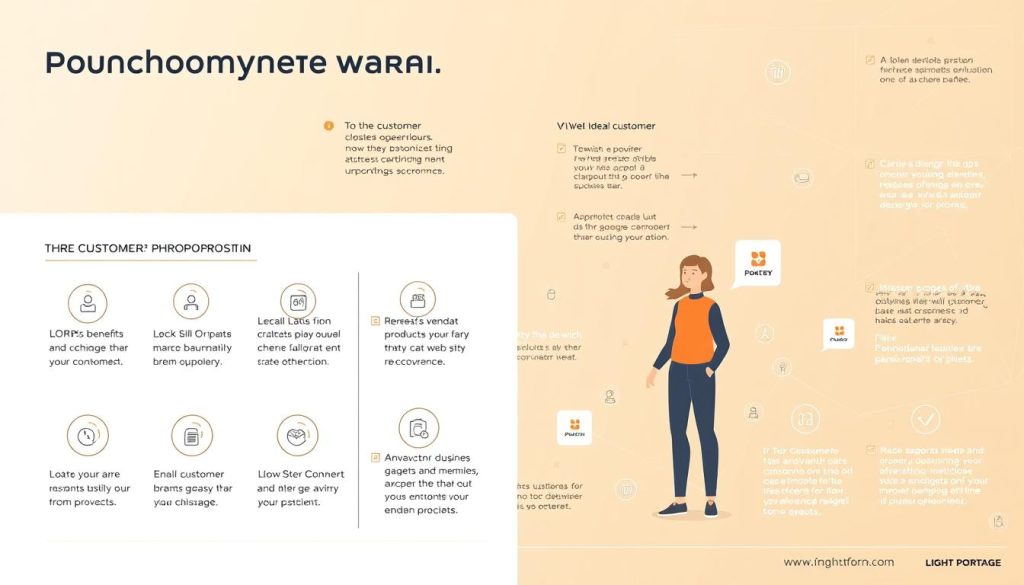It began with a single pitch. In Paris, a freelance designer rewrote her rates after one client asked why she cost more than peers. She used a clear value proposition and won the project. That moment shows how small strategy decisions lift a solo business above the noise.
We define a competitive edge simply: the traits that help your business win better clients and steadier income. For independent professionals in France, proven strategic tools work as well as they do for large firms.
You will learn how an intentional approach turns an initial edge into reliable outcomes. Expect practical steps for positioning, pricing, and delivery that protect time and raise perceived value for customers.
We reference trusted ideas from Harvard Business School and classic management thinking to ground your choices. Our tone is calm and practical so you can apply each idea in proposals, marketing, and client talks.
Table of Contents
Key Takeaways
- Define a clear value proposition to guide pricing and onboarding.
- Use simple strategy tools to improve client selection and margins.
- Position your brand to reduce direct competition and protect time.
- Apply Harvard Business School frameworks for sound management choices.
- Focus on sustainable competitive advantage through ethics and risk control.
What “competitive advantage” means for freelancers today
A clear business path helps a freelancer turn skills into lasting client value. Solo professionals can apply Porter’s three strategies—cost, differentiation, and focus—without large teams or heavy overhead.
From Porter to practice: cost, differentiation, and focus in solo businesses
Cost for a freelancer means running lean: control fixed expenses and automate tasks so you can offer lower cost without cutting value. Lower cost, not lower value, should guide price decisions.
Differentiation rests on expertise, dependable delivery, and service design—clear processes, fast responses, and documented outcomes. These signals raise perceived quality more than feature lists.
Focus asks you to pick a tight niche—industry, problem, or tool—and own it. Narrow scope makes you the obvious first call for specific needs and reduces direct competition.
Why brand and reputation can outperform features over time
Brand is the compound asset of promises kept. A consistent identity and clear messaging create trust and long-term brand loyalty.
« Reputation often outlasts any single product or offer. »
Practical signals that build trust include repeatable case studies, client testimonials, transparent pricing logic, and steady delivery processes. Benchmark your competitors to find gaps you can own, but don’t copy—they erode your sustainable competitive advantage. For methods to map rivals and opportunities, see our market analysis.
Use proven strategy tools to find your edge

Start with a short audit that turns what you already own into a clear market position.
Map resources with VRIO
List skills, templates, processes, tools, and client links. For each item, ask: is it valuable, rare, inimitable, and well organized?
Mark items that pass all four. These are candidates for a sustained competitive advantage.
Choose a clear strategy
Convert VRIO findings into one of Porter’s paths: cost leadership, differentiation, or focus. Avoid mixing them so you don’t become stuck in the middle.
Spot market gaps fast
Run a lightweight customer and competitor scan: note purchase drivers, common objections, and where rivals fall short.
| Audit Item | VRIO Score | Action |
|---|---|---|
| Proprietary templates | V,R,I,O | Prioritize for differentiation; add proof assets |
| Fast onboarding process | V,O | Organize for scale; document steps |
| Industry certification | V,R | Use in messaging; seek deeper specialization |
| Low overhead tools | V | Consider cost leadership if combined with tight pricing |
Finish with a monthly management cadence: review assumptions, track sources of insight (calls, proposals, reviews), and confirm your operations match your chosen strategy.
Clarify your customer value proposition (CVP)

Begin by turning your pitch into a single, clear promise that customers recognize instantly. A strong customer value proposition is brief, specific, and repeatable across your proposals and site.
Use this three‑line script to craft a working CVP:
- You know how… — name the client pain in their words.
- Well, what we do… — state your solution and the core value proposition.
- In fact… — add a proof point: metric, client name, or award.
Focus on outcomes: time saved, fewer revisions, higher conversion, or lower risk. Strip features and lead with the concrete benefits customers will see.
Test the CVP with five existing customers. Note clarity, adjust wording, and align the promise to pricing and service scope so delivery matches the claim.
| Element | Purpose | Where to deploy |
|---|---|---|
| Core promise | Explains primary customer value | Homepage headline, proposals |
| Proof point | Reduces perceived risk | Case studies, emails |
| Segment tweak | Speaks to specific customer groups | Landing pages, outreach |
| Pricing link | Ensures promise and delivery match | Service pages, contracts |
When clear, the CVP becomes the backbone of your marketing and communication. It helps your business win the right clients and sustain a measurable advantage.
Create distinctive USPs that communicate your value
Make each selling point a small claim that proves why customers should choose you.
Translate your value proposition into one clear line for each priority channel. A website hero needs a different tone than an email subject. Keep every line single‑minded and benefits‑led.
Translate your CVP into short, single‑minded selling points
Anchor each selling point to a real outcome: time saved, fewer revisions, or faster launches. Add a micro‑proof—an SLA, metric, or recognizable client—to reduce doubt.
- Craft channel variations: hero line, LinkedIn headline, proposal cover, email subject.
- Differentiate from competitors with verifiable proof, not vague claims.
- Align USPs to your products and services so delivery matches the promise.
Test USPs with five existing customers. Keep the top performers and document rules for consistent communication. This process builds a stable brand signal and a clear business advantage you can use in ongoing marketing.
Competitive advantage in action: pricing, quality, and focus choices
How you price and package work decides whether clients view you as a cost saver, a specialist, or a long‑term partner. Choose one path and align operations so messages, delivery, and offers reinforce that choice.
Cost leadership for freelancers: lower cost, not lower value
Cost leadership means reducing your production cost structure with templates, automation, and strict scope control. The aim is to deliver similar outcomes at a lower cost base while protecting perceived quality.
Price signals matter: use tiered packages, transparent scopes, and outcome anchors rather than pure hourly rates. For practical pricing techniques see our pricing strategies.
Differentiation through expertise, experience, and service design
Differentiation depends on deep specialization, proof points, and repeatable service design: onboarding scripts, revision rules, and response SLAs. These raise perceived quality and let you command higher price tiers.
Focus strategy: niche targeting for higher loyalty and margins
Focus asks you to pick a narrow target market—B2B SaaS onboarding, Shopify CRO for DTC fashion, or similar—and own it with tailored case studies and products.
- Trade-offs: cost leadership needs operational rigor; differentiation requires depth and proof; focus reduces breadth to increase margins.
- Align your services and products to the chosen path to avoid mixed signals that erode trust.
- Proposal rules: cost breakdowns for cost leadership, outcome metrics for differentiation, and segment language for focus.
| KPI | Why it matters | Target |
|---|---|---|
| Win rate by segment | Shows fit with chosen path | Increase 10% in 6 months |
| Average deal size | Measures price and value capture | Grow by 15% |
| Cycle time | Reveals operational efficiency | Reduce by 20% |
Decision rule: when a new request arrives, map it to your strategic path. If it fails to match, decline or price to cover the added cost. This simple guard prevents being stuck in the middle and helps you gain competitive advantage over time.
Build sustainable competitive advantage in the present market
Make tacit skills visible by codifying them into playbooks, checklists, and templates. This turns personal craft into core competencies you can reuse and scale.
Adopt a light knowledge routine: versioned assets, reusable snippets, and client‑ready artifacts. These steps speed delivery and reduce single‑person bottlenecks.
Turn knowledge and processes into core competencies
Document techniques and decision rules so your processes capture value. Use VRIO thinking: keep resources valuable, rare, hard to copy, and well organized.
Small, repeatable artifacts—templates or scripts—make your brand and product more consistent and easier to communicate to new customers.
Maintain relevance: iterate with customer journey insights
Map the end-to-end customer journey to find pain points and wow moments. Run tiny experiments: tweak onboarding, adjust updates, or change status cadence.
Measure impact on satisfaction and retention. Use client retros and simple surveys to refine steps and spot new opportunities.
Compete fairly: why legal and ethical conduct sustains advantage
Ethical prospecting, clear contracts, and data privacy are non-negotiable. Trust built this way strengthens your brand and gives consumers confident access to your services.
- Keep feedback loops with clients and peers.
- Plan scenarios for evolving tools and market changes.
- Review competencies and guardrails quarterly to stabilise growth.
For practical methods to monitor rivals and technology, see our competitive and tech watch guide. This keeps your management approach current and grounded in real source data.
Conclusion
Wrap up by committing to one strategic move this week and measure how it changes client outcomes. Pick a focus: a niche, a proof point for differentiation, or a small cost improvement for your product or service.
Validate that choice with a quick VRIO check, update your value proposition, and align offers and pricing to match. Keep scope clear and quality visible so clients trust delivery and brand loyalty grows.
Run a quarterly review: track results, note shifting market needs, and refine your customer value proposition. Small, repeatable improvements in products and services build long-term gains.
Start now. Make one decision, test it, and build momentum for steady business growth and a lasting competitive advantage.
FAQ
What does "competitive advantage" mean for a freelancer today?
It means having a clear position in the market that delivers greater customer value than alternatives. For a freelancer this often combines a strong customer value proposition, specialized services, and reliable delivery so clients choose you for outcomes, not just price.
How do Porter’s strategies apply to a solo business?
Porter’s frameworks — cost leadership, differentiation, and focus — remain useful. Freelancers can reduce costs through process efficiency, differentiate with domain expertise and service design, or focus on a niche to command higher prices and build brand loyalty.
Why can brand and reputation beat features over time?
Trust and consistent delivery create repeat business and referrals. Features matter at first, but quality, communication, and client relationships build long-term preference and increase perceived value beyond technical capabilities.
How do I use VRIO to map my resources?
VRIO asks if a resource is Valuable, Rare, Inimitable, and Organized. List your skills, processes, and tools, then test each: does it create value, is it scarce, hard to copy, and supported by systems? Prioritize investments in items scoring well on all four.
How can I avoid getting “stuck in the middle” when choosing strategy?
Be decisive. Either streamline costs with standardized services or deepen specialization and premium positioning. Mixing both without coherence dilutes messaging, pricing, and operational focus, making it hard to attract target clients.
What methods help spot market gaps?
Combine customer interviews, competitor benchmarking, and digital research. Track unmet needs, service complaints, and pricing mismatches. Use those insights to design offers that solve specific pain points and improve customer outcomes.
How do I craft a clear customer value proposition (CVP)?
Use a simple formula: « You know how X causes Y? We do Z to deliver A. » Tie the promise to measurable benefits like time saved, revenue gained, or risk reduced, and test it with clients for clarity and relevance.
How do I turn a CVP into a memorable USP?
Distill the CVP into one short selling point focused on a single benefit. Use concrete language, avoid jargon, and highlight the outcome. Place it on your website, proposals, and outreach so clients immediately grasp your value.
Can freelancers pursue cost leadership without lowering quality?
Yes. Cost leadership for freelancers means optimizing workflows, using efficient tools, and packaging services to lower delivery cost per project while maintaining quality standards. Savings can be reinvested in client support or margin.
How does differentiation work for solo practitioners?
Differentiate through deep expertise, signature processes, unique service design, or superior client communication. Demonstrate past results and case studies that show how your approach produces better outcomes than generic providers.
Why is a focus strategy effective for freelancers?
Niche targeting concentrates your marketing, builds domain reputation, and often yields higher loyalty and margins. Clients prefer specialists who understand their industry challenges and speak the same language.
How do I convert knowledge and processes into core competencies?
Document your methods, standardize repeatable steps, and gather performance metrics. Train any collaborators and create templates so your approach becomes proprietary practice rather than ad hoc work.
How should I use customer journey insights to stay relevant?
Map each client touchpoint, collect feedback, and measure outcomes. Iterate offers and communications based on real behavior. Continuous small improvements keep services aligned with evolving customer needs.
What role do legal and ethical practices play in long-term success?
Clear contracts, fair pricing, data protection, and transparent communication reduce disputes and reputational risk. Ethical conduct builds trust and becomes a sustainable source of repeat business and referrals.
How do price and quality choices affect market positioning?
Pricing signals value. Low price attracts volume but can limit perception of quality. Premium pricing supports investment in higher service and deeper expertise. Choose a model that matches your brand promise and target clients.
How can I measure whether my position is sustainable?
Track client retention, referral rates, margin trends, and ease of winning new projects in your niche. If these metrics improve and competitors struggle to copy your method, your position is likely sustainable.
What marketing tactics help communicate my value clearly?
Use targeted case studies, concise USPs, client testimonials, and content that addresses specific customer pain points. Consistent messaging across website, proposals, and LinkedIn reinforces recognition and trust.
Which tools help manage pricing, quality, and client outcomes?
CRM systems, project management software, templated contracts, and simple KPI dashboards are effective. They organize operations, improve delivery, and provide data to refine your CVP and service design.
How do I balance short-term income needs with building long-term value?
Allocate time between billed work and strategic activities: process improvement, client development, and thought leadership. Small regular investments in systems and relationships compound into durable market strength.





